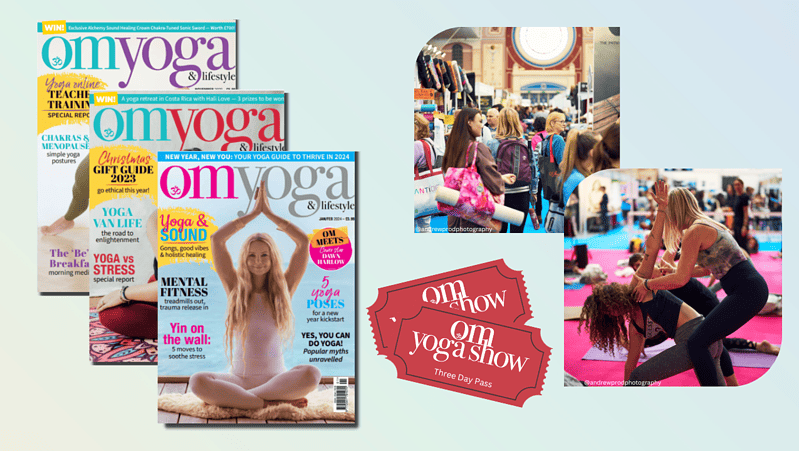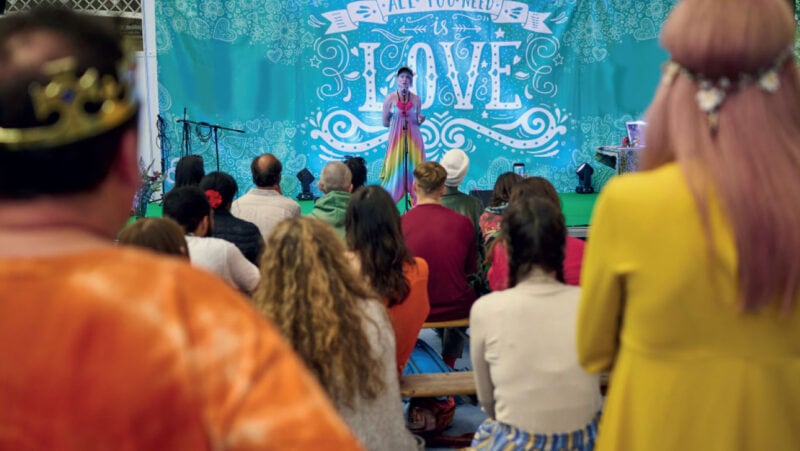
Making yoga a part of your life
Follow the breath: Integrating your yoga teacher training learnings into your way of life. By Debbie Avery
Studying to become a yoga teacher — or as I like to put it ‘an ambassador for the benefits of yoga’ — has its ups and downs, trials and tribulations…but most of all joy and laughter. The highs are always present when studying and learning together in class. A group of like-minded students sharing the same energy, opening up to each other, trusting and supporting each other. There is a feeling of acceptance, togetherness, camaraderie and, of course, the excitement of embarking on this powerful, often life-changing journey. As the great Sutras of Patanjali are followed, everyone experiences and feels the benefits in learning to understand the power of such practices.
Unfortunately, however, our lives are often busy. Many of the Sutras are long forgotten and become diminished to just words or concepts learned in training but never lived and fully experienced. We see this first hand where in many western yoga classes the essential practice of Pranayama is neither taught or included. In fact, the importance of the breath is rarely mentioned except for the occasional reference “relax with the breath” or “simply breathe”.
As this was being written we were in the middle of the Covid-19 lockdown and as we all have come to know and fear, this is a virus which attacks our respiratory system (breathing apparatus). The yogis of old were in no doubt about the importance of Pranayama to aid our physical, mental, spiritual and emotional wellbeing.
On my bookshelf at home are some very old and tattered yoga books published in the 1950s by some pioneering yoga teachers such as Indra Devi and Theos Bernard. They sit side-by-side with the classics offered by many of the great Swamis, both past and present. All these texts have one thing in common: the emphasis being more on the breath than on asana. There is chapter upon chapter, exploring the breath, healing with the breath, purifying our bodies with the breath and in fact simply learning how to breathe properly.
So, ultimately, if aspiring teachers were to spend just a little time every day to focus on the quality of the breath — how they breathe alongside practicing the more common Pranayama techniques — the benefits upon their own wellbeing would be so profound that they would intuitively instil these teachings into their classes. It’s like Yin and Yang, Shiva and Shakti, Ida and Pingala: you cannot have one without the other; it simply doesn’t work.
The world would be a much happier and healthier place if we all understood the power of the breath and how to use it and link it to the other Sutras. We would all have the tools to concentrate more fully and see things as they really are (Dhyana). We would meditate more easily (Dyhana) to help bring a deeper understanding and connection to each other, the universe and our place within this world. We would feel our bodies become freer and more open, less aches and pains and ultimately experience a deep joy in movement utilising the breath to move energy (Prana). It is not always easy to find the time to practice asana on the mat every day, but paying attention to our inhalation and exhalation and the space between them can easily be woven into every moment of our day. Drawing Prana into our lungs and entering into the rhythm of life, is one of the greatest gifts that yoga can offer us.
As Indra Devi said: “Don’t waste your breath! Everything that lives and moves has a rhythm. The planets, the stars, the earth, the seas, the insects, the animals and every human being. We can live and function harmoniously as long as we keep our rhythm. Out of step and we lose our equilibrium.” In other words, once we have mastered the breath, the Yamas, Niyamas and all else will naturally fall into place and thus become integrated into our daily yogic life. Our spiritual journey on this earth begins and ends with the breath and as we know that yoga is a state of being, if we can learn to harness the breath we can truly celebrate all that life has to offer.
Debbie Avery, yoga elder and teacher trainer (FRYOG), runs a yoga studio 'Bude Yoga and therapy space' in North Cornwall, offering yoga classes, teacher training and osteopathy







